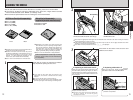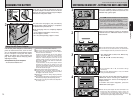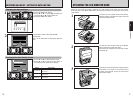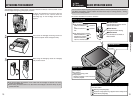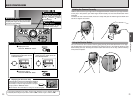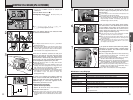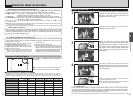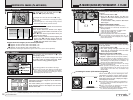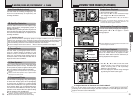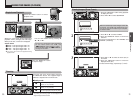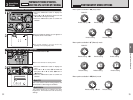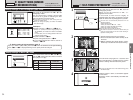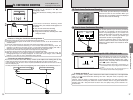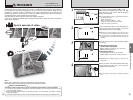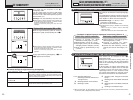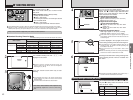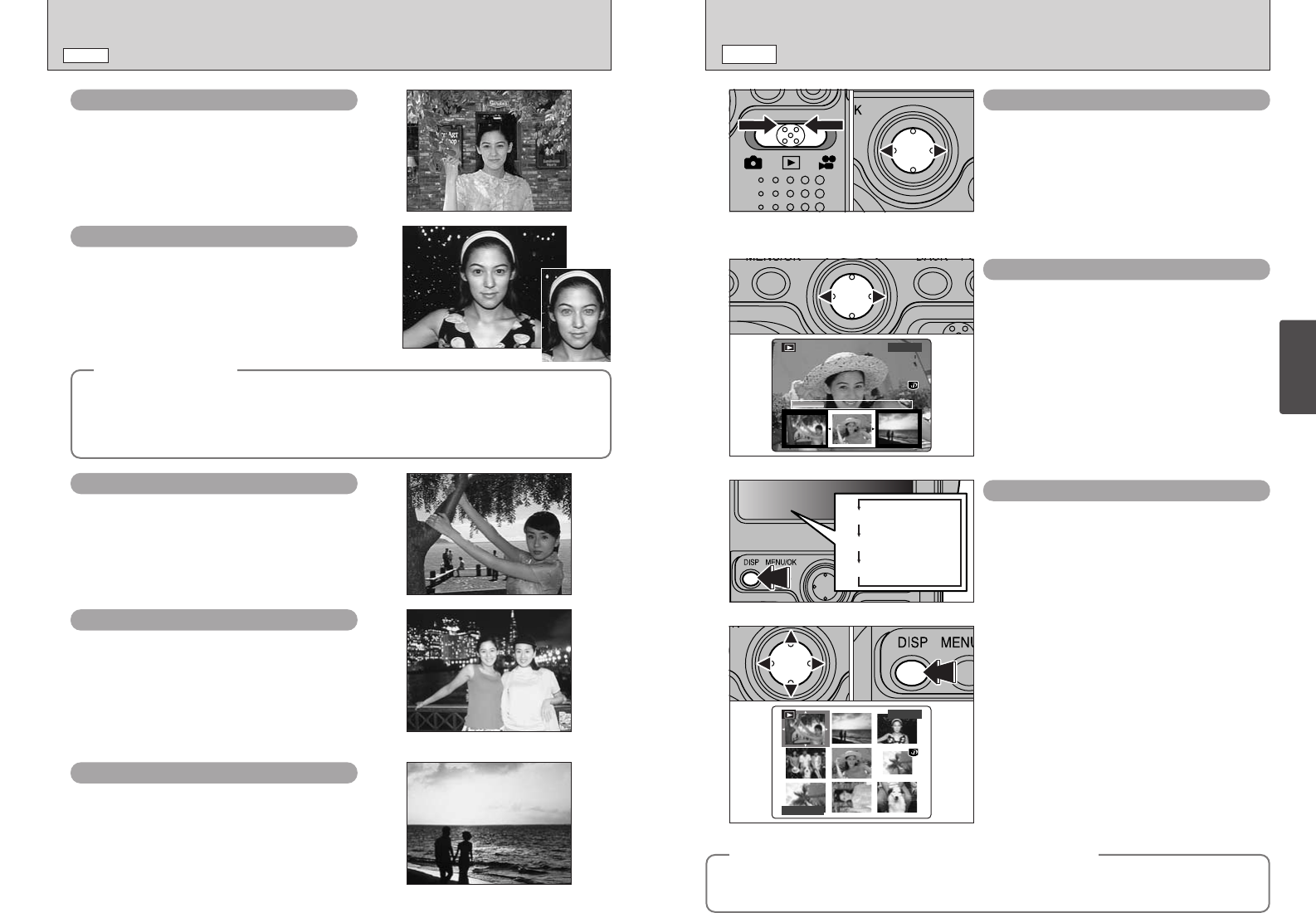
e MACRO
(
CLOSE-UP
)
PHOTOGRAPHY
•
z FLASH
q
MODE
28
VIEWING YOUR IMAGES
(
PLAYBACK
)
w
MODE
29
Basic Photography
2
Text displayed
No Text displayed
Multi-frame playback
01 02
01 02
Use this mode to photograph backlit scenes,
such as a subject against a window or in the
shade of a tree, or to obtain the correct colors
when you are shooting under lighting such as
fluorescent tubes. In this mode, the flash fires in
bright as well as dark conditions.
Use this mode for photography using indoor lighting,
for shots taken through glass, and for photography
in venues such as theaters or at indoor sporting
events where the distance is too great for the flash
to be effective. When you use Suppressed Flash,
the Automatic White Balance function (➡P.85)
operates so that natural colors are captured along
with the ambience of the available light.
●
!
If you are shooting in Suppressed Flash mode in dark
conditions, use a tripod to prevent camera shake.
●
!
See P.80 for information on the camera shake warning.
This is a flash mode that uses a slow shutter speed
(slowest shutter speed: 1/4 sec.). This allows you
to take pictures of people at night that clearly show
both your subjects and the night time backdrop.
●
!
The image may be overexposed when you shoot bright
scenes.
●
!
Because a slow shutter speed is used, a tripod should be
used to prevent camera shake.
Use this mode to ensure that the subject’s eyes
appear natural when photographing people in
low-light conditions.
The flash fires a pre-flash just before the picture is
taken and then fires again to take the actual picture.
The flash fires automatically as required by the
shooting conditions.
Use this mode for ordinary photography. The
flash fires automatically as required by the
shooting conditions.
◆
Red-Eye Effect
◆
When you use the flash to photograph people in low-light conditions, their eyes sometimes
appear red in the picture. This is caused by the light of the flash reflecting off the inside of the
eye. Use Red-Eye Reduction flash to effectively minimize the likelihood of the red-eye effect.
Take the following measures to make Red-Eye Reduction more effective:
h Get the subjects to look at the camera. h Get as close as possible to the subjects.
1Set the Mode switch to “w”.
2You can use “c” to scan forward through
your images and “d” to scan backwards.
●
!
When you set the Mode switch to “w”, your last shot is
played back.
●
!
If the lens is extended during playback, the lens
automatically retracts as a protective measure if the
camera is not used for approx. 6 seconds.
◆
Images That Can be Viewed on the FinePix M603
◆
You can use this camera to play back still images recorded on a FinePix M603 and still images
(excluding some uncompressed images) that were recorded on a FUJIFILM digital camera that
supports xD-Picture Cards or Microdrives.
Fast-forwarding Through Your Images
Single-frame Playback
You can scan quickly through your images by
holding down “d” or “c” for approx. 1 second
during playback.
●
!
A bar is displayed as a rough guide to the location of the
current image on the media.
The screen displayed changes each time you
press the “DISP” button in playback mode.
Press the “DISP” button until the multi-frame (9-
frame) playback screen appears.
Multi-frame Playback
1Use “a”, “b”, “d” or “c” to move the cursor
(orange frame) to the frame you want to
select. Pressing “a ” or “b” repeatedly
switches to the next page.
2You can display the current image enlarged
by pressing the “DISP” button again.
Auto Flash Mode (no icon)
n Red-Eye Reduction
I Forced Flash
b Suppressed Flash
v Slow Synchro



